Mulching is one of the best things you can do for a garden. Here’s why you should embrace mulch in your garden, and how to make it right on site by growing plants that are — essentially — instant chop and drop mulch.
Originally published in February, 2018; this post has been updated.
New to gardening? Limited on space? The 5-Gallon Garden gives you the skills you need to grow food in the space you have. Get started with your garden today!
Mulching around growing plants and trees helps to retain soil moisture and hold down weeds, and as the mulch breaks down, it adds nutrients to the soil. Grass clippings, leaves, and straw are all excellent options for mulching in a garden.
What about wood chips? I tend to use wood chips as mulch around trees and aim for “softer” mulch that will break down more quickly in the vegetable garden.
Mulching is particularly useful in regions that are facing drought or water shortages. Read more about drought tolerant gardening here to save on water!
Grow Some Greens!
Ready to grow fresh greens, no matter WHERE you live? Sign up for my
FREE quick-start guide and start growing some of your own food!
Getting Started with Chop and Drop Mulch
One of the kind of “aha” ideas I’ve learned from delving into the idea of permaculture is that of starting with non-productive crops.
In other words, instead of planting fruiting trees and plants right off the bat, it makes sense to plant fast-growing plants and trees that can be used as “chop and drop” mulch to help build the soil first.
The idea of composting and mulching is not new to me, but I tend to be a bit impatient. I want to grow food now. As the video below shows, there are just some situations that require patience.
How to make mulch – grow it!
The most important feature of crops used for chop and drop mulch is that they grow quickly. They generate a lot of potential green waste that can be clipped or pruned regularly to add mulch to the soil surface. In using this method, you’re essentially replicating what Mother Nature does in a lush forest. As leaves and branches drop in a forest, they break down and create a thick, spongy layer of compost.
By mimicking this system in your space, you are essentially producing your own mulch and compost right on site, rather than needing to bring it in from elsewhere.
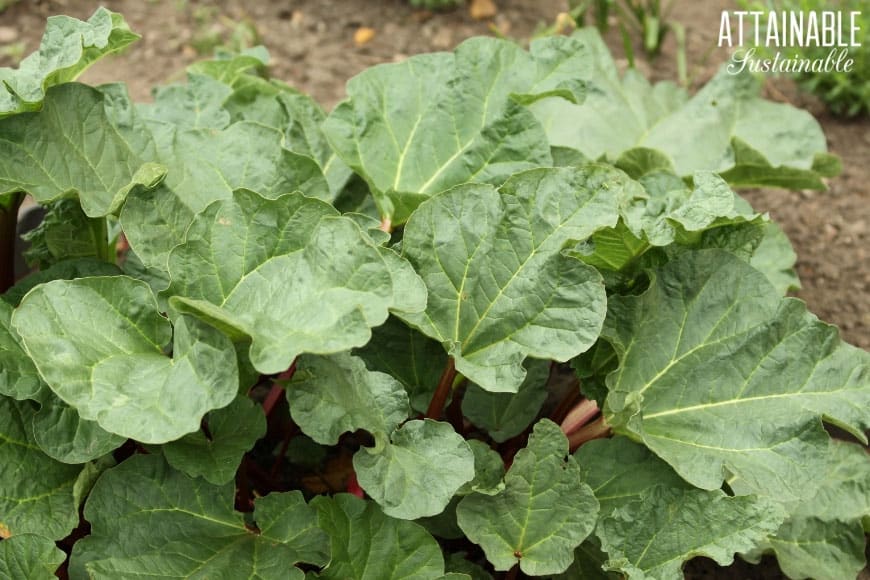
The large leaves of rhubarb are good for mulching.
Some people will balk at the untidy nature of gardening like this, but it’s worth it. A thick layer of mulch helps to retain moisture while it breaks down, adding nutrients to the soil. A heavy layer of mulch keeps weeds down, too.
So, what plant material makes good green waste for mulching? It will depend on where you live, of course. My go-to mulch plants here are comfrey (above), ginger, yacon, vetiver, and banana stumps simply because they’re plentiful. But there are other options to consider.
12+ Plants to Grow for Chopping and Dropping
The options listed below are fast growing. Most will grow back very quickly after pruning, allowing you to harvest green leaves across an entire season and drop plant material in your yard or food garden.
- Comfrey
- Rhubarb (plus it makes a great rhubarb coffee cake)
- Pigeon pea
- Moringa
- Fava bean plants (above) are great mulch and the roots improve soil quality by adding nitrogen to it.
- Lupine
- Sorghum (more on growing sorghum here)
- Sun hemp
- Crotolaria
- Lemongrass (more on growing lemongrass here)
- Vetiver
- Swiss chard (more on growing Swiss chard here)
- Yarrow
- Elderberry (the berries are good for you, too)
- Buckwheat (more on growing buckwheat here)
- Nasturtiums (their leaves and seeds are edible)
While I mention these as fast growing mulch crops, just about any plant you prune will be beneficial. Just let the waste drop in place rather than hauling it off.
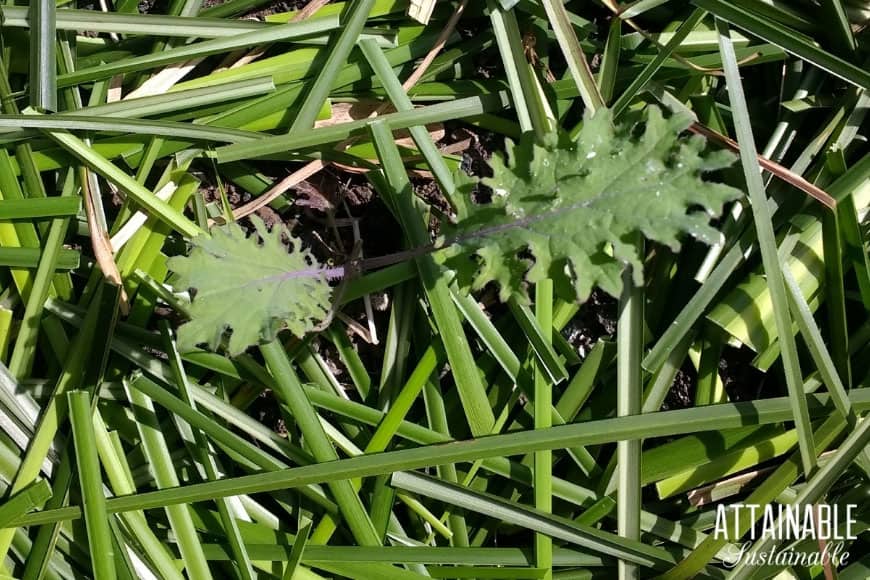
Vetiver surrounding a kale seedling.
Permaculture and greening the desert
Using permaculture methods, including the idea of a chop and drop mulch, Geoff Lawton and his team created a green oasis in the middle of a Jordan desert. The video below is just two minutes long, but it shows the possibilities of creating permaculture food forests even in severe drought conditions. [Be sure to read my post about gardening in drought conditions, too.]
Before & After Scans after 5 years.
Here he is talking about the details of the project. And be sure to check out Gaia’s Garden: A Guide to Home-Scale Permaculture for more detailed information.
Permaculture Behind Greening the Desert with Geoff Lawton
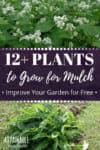
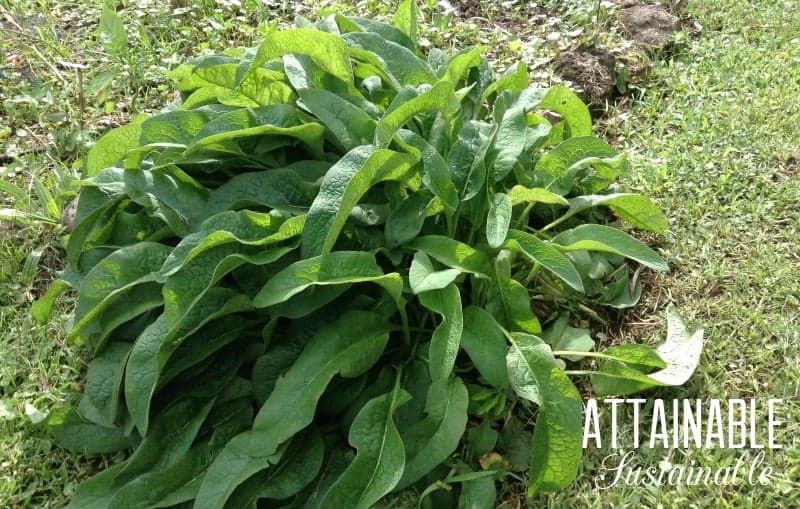
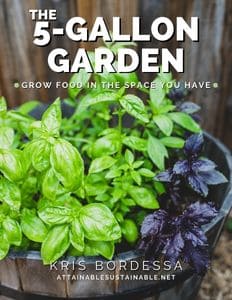
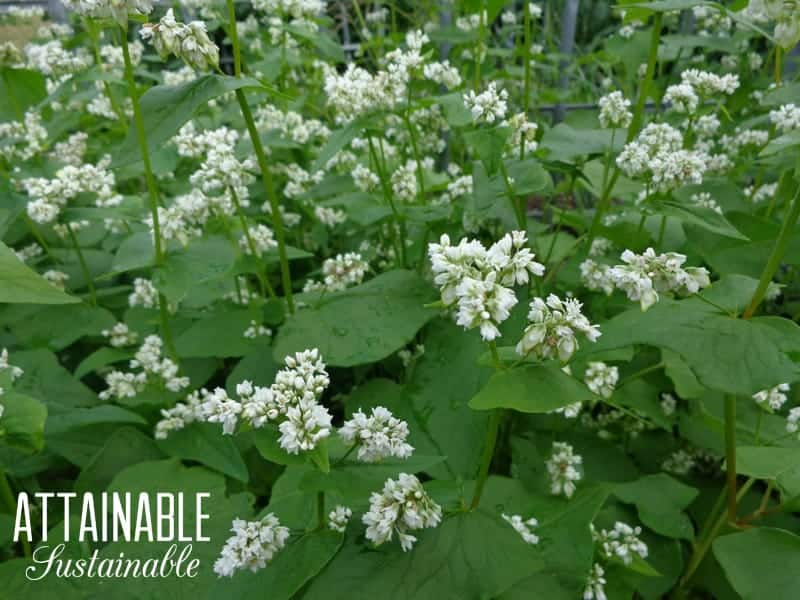
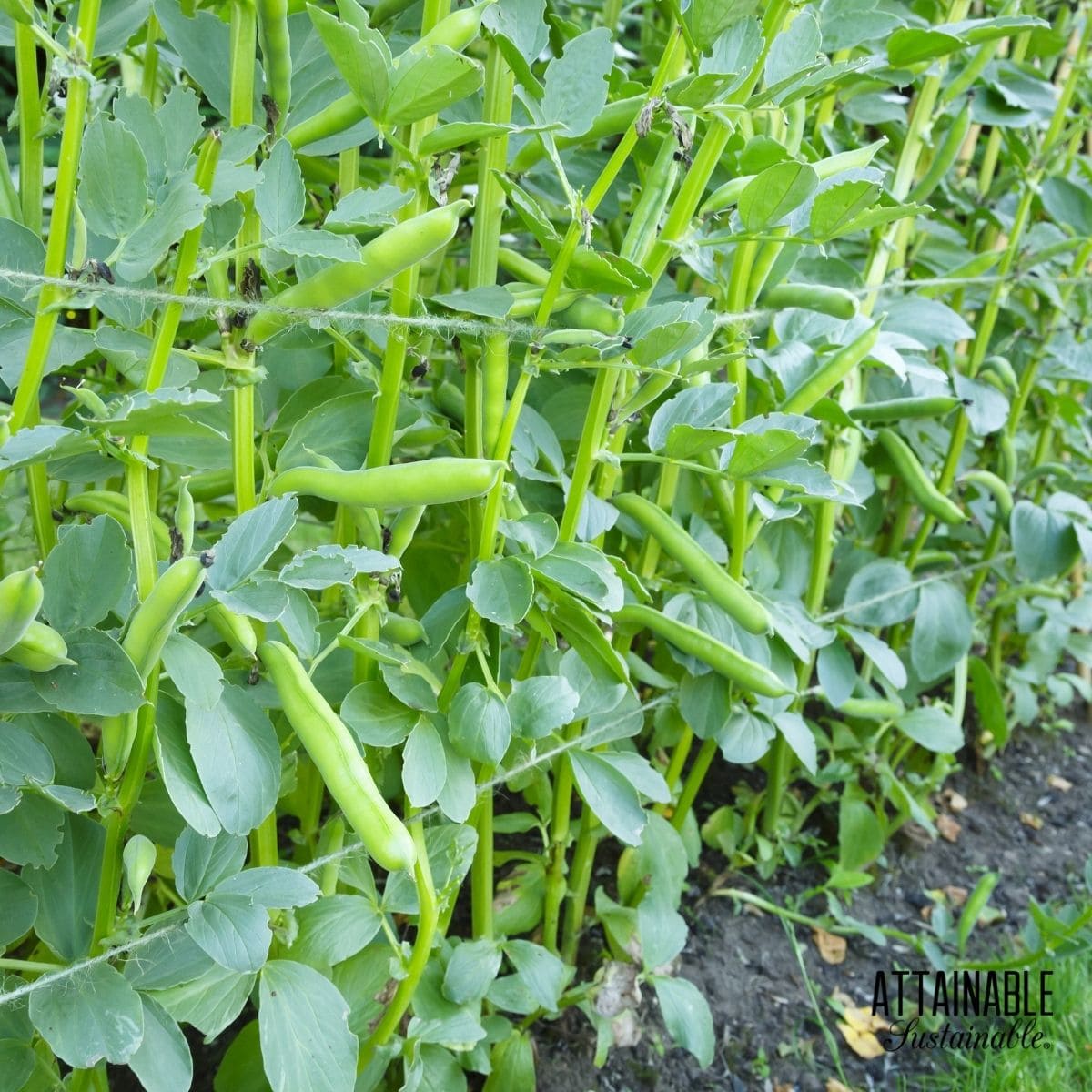
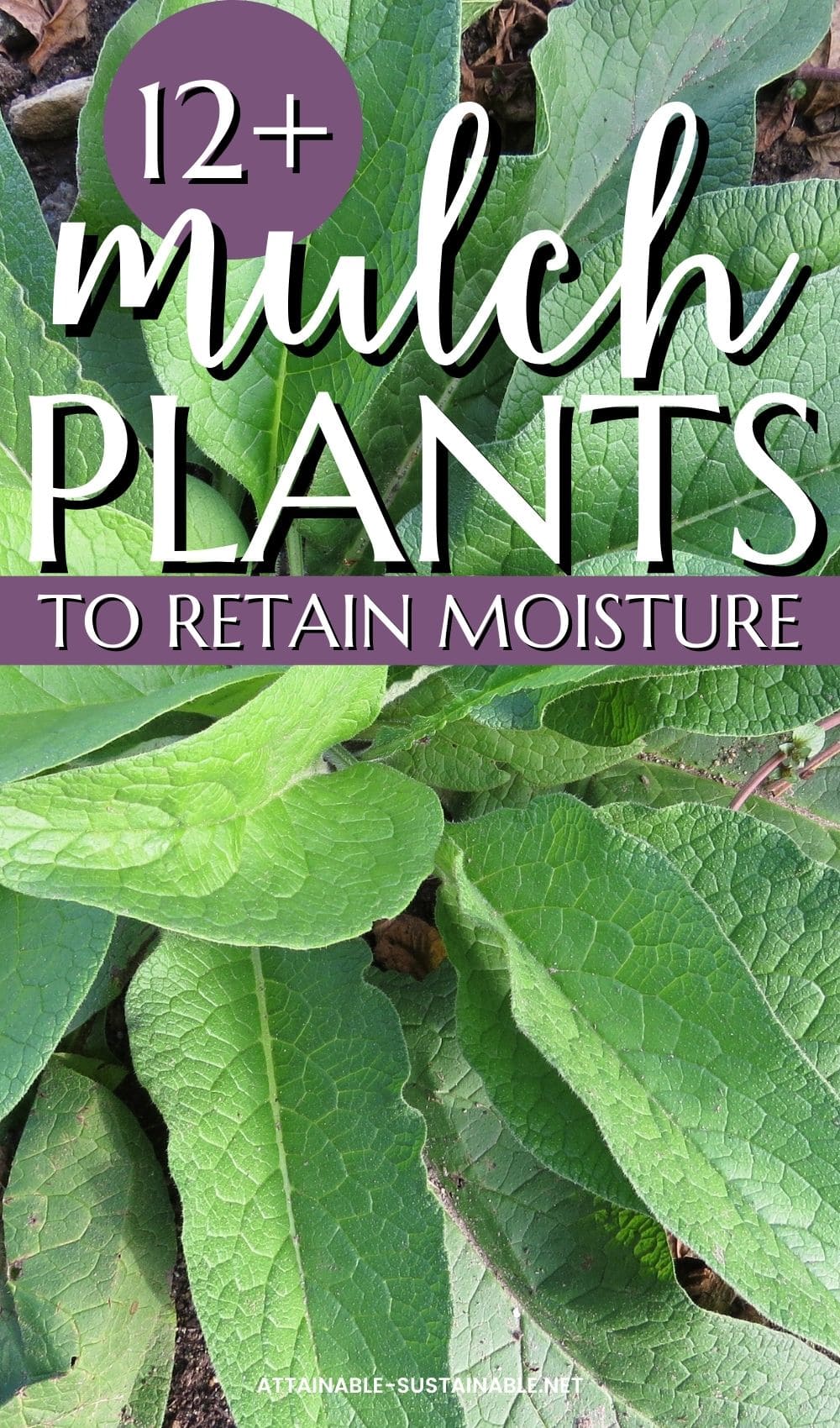

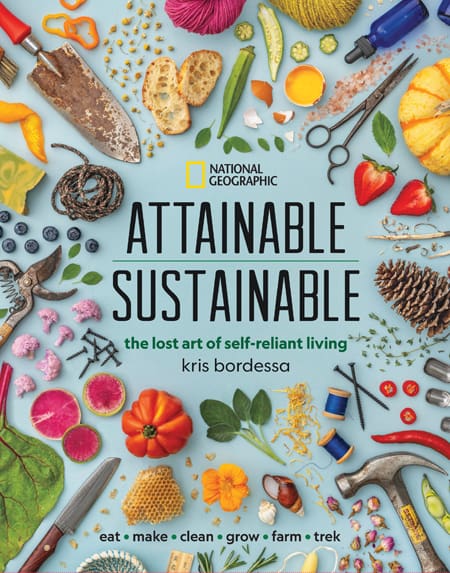
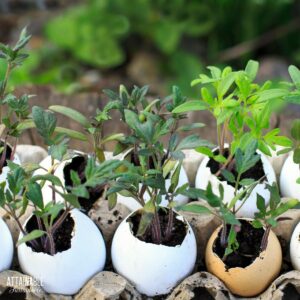
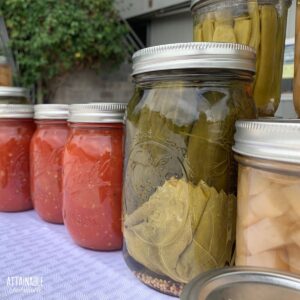
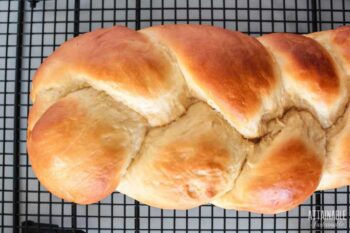
Comfrey is also great fast growing plant for lots of biomass for mulching
Yes!
Great article. Also, thank you for including “plants to grow for chopping and dropping”. Really helps. Thanks.
Thank you for this informative blog. I do have a question: After cutting and dropping, do you leave the roots in the soil?
Ah, yes! Most of these plants will regrow, making more mulch!
This was an excellent article and it’s good to see de-desertification in progress. But I garden in raised beds (in the Mohave desert) and the problem with this approach is you have to be sure you get diseased plant parts out of the garden instead of letting them be part of your mulch. Otherwise as your mulch decays it transfers the diseases into your soil which holds the disease until next year’s crop.
Also, because of the high winds in my area, I’ve found using small bark chips to be better for mulch than straw or chopped plants.
Mulch saves water, a critical problem here in the Mohave, but the wrong mulch creates more problems than it solves.
Could you tell me what plant is in that very first picture, please?
That’s comfrey.
Awesome video, thanks for sharing!
Thank you for this wonderful insight …..so much is possible….if only politics and greed didn’t get in the way….one day….
A rather nice way letting nature work for us
I love stories like this. Sensational work!
Keep up the wonderful work!
Wonderful peek into work I didn’t know was being done! Thank you for the introduction and the inspiration! Off to learn more!